
Natural gas is a naturally occurring mixture of gaseous hydrocarbons consisting primarily of methane (97%) in addition to various smaller amounts of other higher alkanes. Low levels of trace gases like carbon dioxide,nitrogen,hydrogen sulfide,and helium are also usually present. Methane is colorless and odorless,and the second largest greenhouse gas contributor to global climate change after carbon dioxide. Because natural gas is odorless,odorizers such as mercaptan are commonly added to it for safety so that leaks can be readily detected.
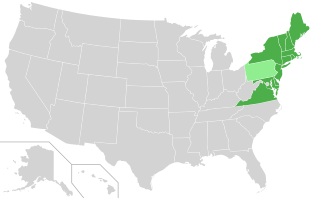
The Regional Greenhouse Gas Initiative (RGGI,pronounced "Reggie") is the first mandatory market-based program to reduce greenhouse gas emissions by the United States. RGGI is a cooperative effort among the states of Connecticut,Delaware,Maine,Maryland,Massachusetts,New Hampshire,New Jersey,New York,Rhode Island,Vermont,and Virginia to cap and reduce carbon dioxide (CO2) emissions from the power sector. RGGI compliance obligations apply to fossil-fueled power plants 25 megawatts (MW) and larger within the 11-state region. Pennsylvania's participation in the RGGI cooperative was ruled unconstitutional on November 1,2023. North Carolina's entrance into RGGI has been blocked by the enactment of the state's fiscal year 2023-25 budget.

Worlds End State Park is a 780-acre (316 ha) Pennsylvania state park in Sullivan County,Pennsylvania. The park,nearly surrounded by Loyalsock State Forest,is in the Loyalsock Creek valley on Pennsylvania Route 154 in Forks and Shrewsbury Townships southeast of the borough of Forksville. The name Worlds End has been used since at least 1872,but its origins are uncertain. Although it was founded as Worlds End State Forest Park by Governor Gifford Pinchot in 1932,the park was officially known as Whirls End State Forest Park from 1936 to 1943.
Pennsylvania Spatial Data Access (PASDA) is Pennsylvania's official public access geospatial information clearinghouse. PASDA serves as Pennsylvania's node on the National Spatial Data Infrastructure (NSDI). PASDA is a cooperative effort of the Pennsylvania Geospatial Technologies Office of the Office of Information Technology and the Pennsylvania State University Institute of Energy and the Environment.
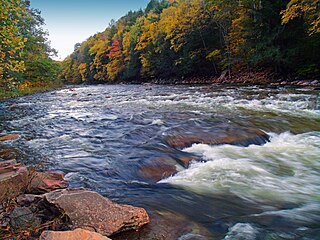
Loyalsock State Forest is a Pennsylvania state forest in Pennsylvania Bureau of Forestry District #20. The forest spans across the northern tier's "Endless Mountains" and is a total of 114,552 acres (46,358 ha). The Loyalsock is a “working forest”and is managed for pure water,recreation,plant and animal habitats,sustainable timber,and natural gas.
The Pennsylvania Department of Conservation and Natural Resources (DCNR),established on July 1,1995,is the agency in the U.S. state of Pennsylvania responsible for maintaining and preserving the state's 124 state parks and 20 state forests;providing information on the state's natural resources;and working with communities to benefit local recreation and natural areas. The agency has its headquarters in the Rachel Carson State Office Building in Harrisburg.
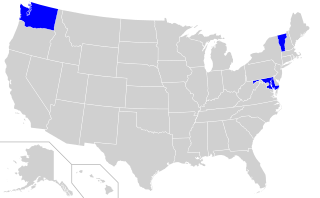
Fracking in the United States began in 1949. According to the Department of Energy (DOE),by 2013 at least two million oil and gas wells in the US had been hydraulically fractured,and that of new wells being drilled,up to 95% are hydraulically fractured. The output from these wells makes up 43% of the oil production and 67% of the natural gas production in the United States. Environmental safety and health concerns about hydraulic fracturing emerged in the 1980s,and are still being debated at the state and federal levels.
The Pennsylvania Department of Environmental Protection (DEP) is the agency in the U.S. state of Pennsylvania responsible for protecting and preserving the land,air,water,and public health through enforcement of the state's environmental laws. It was created by Act 18 of 1995,which split the Department of Environmental Resources into the Department of Environmental Protection and the Department of Conservation and Natural Resources. Its current secretary is Jess Shirley.
Citizens for Pennsylvania's Future (PennFuture) is a nonprofit environmental advocacy organization based in Harrisburg,Pennsylvania,United States. As of 2021,the organization has five offices across Pennsylvania:Philadelphia,Pittsburgh,Harrisburg,Mt. Pocono and Erie.
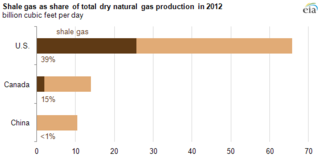
Shale gas is an unconventional natural gas that is found trapped within shale formations. Since the 1990s a combination of horizontal drilling and hydraulic fracturing has made large volumes of shale gas more economical to produce,and some analysts expect that shale gas will greatly expand worldwide energy supply.

Chief Oil &Gas is a company founded in Dallas,Texas in 1994 by Trevor Rees-Jones. Its primary holdings of natural gas were developed in the core areas of the Barnett Shale in Tarrant County,Denton County and Parker County. In 1999,new technology in horizontal drilling and hydraulic fracturing along with rising gas prices made the Barnett Shale,an unconventional resource for natural gas,more economical. Chief rapidly expanded its leasehold position and drilling and production program in the Barnett Shale to become the fields second largest producer there.
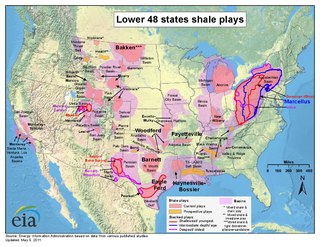
Shale gas in the United States is an available source of unconventional natural gas. Led by new applications of hydraulic fracturing technology and horizontal drilling,development of new sources of shale gas has offset declines in production from conventional gas reservoirs,and has led to major increases in reserves of U.S. natural gas. Largely due to shale gas discoveries,estimated reserves of natural gas in the United States in 2008 were 35% higher than in 2006.

Fracking is a well stimulation technique involving the fracturing of formations in bedrock by a pressurized liquid. The process involves the high-pressure injection of "fracking fluid" into a wellbore to create cracks in the deep-rock formations through which natural gas,petroleum,and brine will flow more freely. When the hydraulic pressure is removed from the well,small grains of hydraulic fracturing proppants hold the fractures open.

Environmental impact of fracking in the United States has been an issue of public concern,and includes the contamination of ground and surface water,methane emissions,air pollution,migration of gases and fracking chemicals and radionuclides to the surface,the potential mishandling of solid waste,drill cuttings,increased seismicity and associated effects on human and ecosystem health. Research has determined that human health is affected. A number of instances with groundwater contamination have been documented due to well casing failures and illegal disposal practices,including confirmation of chemical,physical,and psychosocial hazards such as pregnancy and birth outcomes,migraine headaches,chronic rhinosinusitis,severe fatigue,asthma exacerbations,and psychological stress. While opponents of water safety regulation claim fracking has never caused any drinking water contamination,adherence to regulation and safety procedures is required to avoid further negative impacts.

The environmental impact of fracking is related to land use and water consumption,air emissions,including methane emissions,brine and fracturing fluid leakage,water contamination,noise pollution,and health. Water and air pollution are the biggest risks to human health from fracking. Research has determined that fracking negatively affects human health and drives climate change.
Shale gas in the United Kingdom has attracted increasing attention since 2007,when unconventional onshore shale gas production was proposed. The first shale gas well in England was drilled in 1875. As of 2013 a number of wells had been drilled,and favourable tax treatment had been offered to shale gas producers.

The Marcellus natural gas trend is a large geographic area of prolific shale gas extraction from the Marcellus Shale or Marcellus Formation,of Devonian age,in the eastern United States. The shale play encompasses 104,000 square miles and stretches across Pennsylvania and West Virginia,and into eastern Ohio and western New York. In 2012,it was the largest source of natural gas in the United States,and production was still growing rapidly in 2013. The natural gas is trapped in low-permeability shale,and requires the well completion method of hydraulic fracturing to allow the gas to flow to the well bore. The surge in drilling activity in the Marcellus Shale since 2008 has generated both economic benefits and considerable controversy.
Green Pond Marsh is the name of a wetlands area located in Bethlehem Township,Pennsylvania. The marsh is located approximately one-quarter mile (0.4 km) south of U.S. Route 22 and east of Farmersville Road. It is bisected by Green Pond Road. The marsh is separated from Green Pond by Farmersville Road.
The PennEast Pipeline is a proposed project by PennEast Pipeline Company,LLC,a consortium of five energy companies,to move natural gas from the Marcellus Shale region in Pennsylvania to New Jersey. The proposed 36-inch (910 mm) pipeline would run from Dallas,Luzerne County to Pennington,Mercer County,New Jersey,a distance of approximately 115 miles (185 km);as currently contemplated,the maximum allowable operating pressure would be approximately 1,480 psi. The pipeline requires the condemnation of properties in the state of New Jersey,which the state has opposed. A ruling against such condemnation was handed down in September 2019.

Fracking in Canada was first used in Alberta in 1953 to extract hydrocarbons from the giant Pembina oil field,the biggest conventional oil field in Alberta,which would have produced very little oil without fracturing. Since then,over 170,000 oil and gas wells have been fractured in Western Canada. Fracking is a process that stimulates natural gas or oil in wellbores to flow more easily by subjecting hydrocarbon reservoirs to pressure through the injection of fluids or gas at depth causing the rock to fracture or to widen existing cracks.













